I’m always excited to know animals with pouches, why they have pouches and purpose and so on. As a result of this I’ve done thorough research and today wrote this article.
In this Article, We shall look at a really cool feature ‘Animals with Pouches’, ‘Purpose of Pouches’ and so on.
Let’s start to feed your brain with the curiosity of pouches.
Table of Contents
Animals With Pouches:
kangaroo
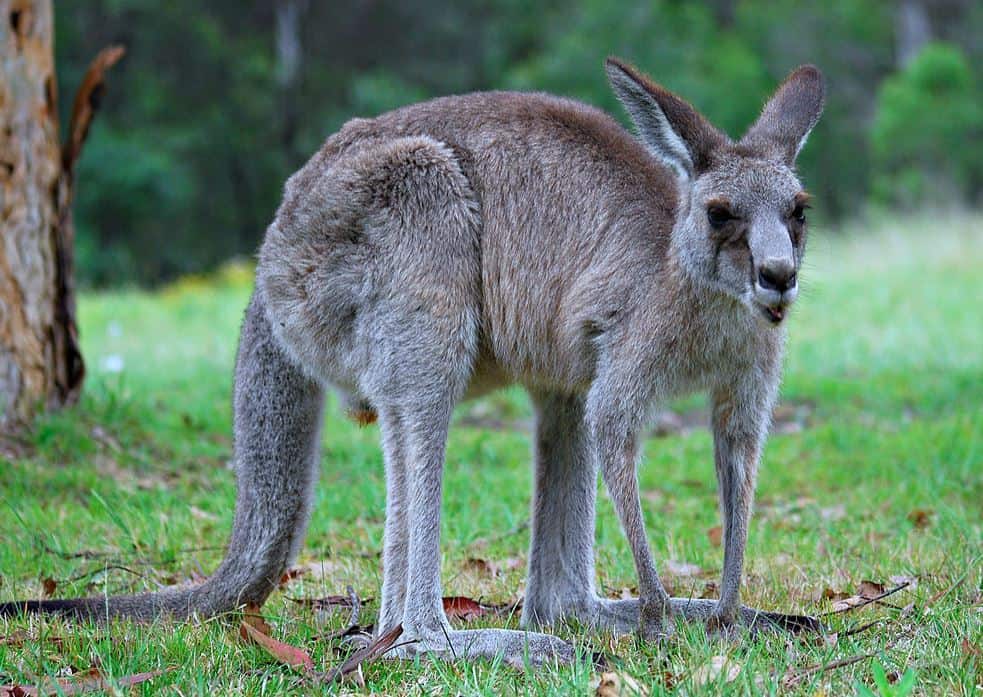
A kangaroo, including the red kangaroo, eastern grey kangaroo, and western grey kangaroo, is a marsupial that belongs to Family Macropodidae, Order Diprotodontia, and is found in Australia, Tasmania, Western Australia to Victoria, and New Guinea.
One can notice the kangaroo pouch easily because of its large size and upward-facing openings. These pouches are meant for nourishing and protecting Joey. A Joey is a newborn baby of a kangaroo that is about only one inch in length at birth. Thus, A pouch of kangaroo provides everything for developing Joey.
The inside surface of a pouch is hairless, contains teats that can produce varieties of milk for Joey, and is lined by sweat glands that can produce an antimicrobial substance to keep the Joey safe and germ-free.
A pouch of a kangaroo is frequently cleaned by the mother by putting her head inside the pouch and also licking the excretion of Joey.
Koala
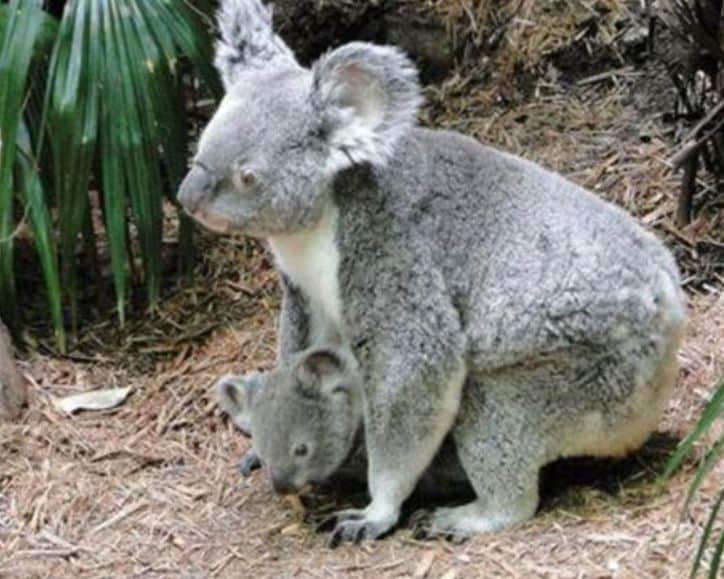
A koala, also known as a koala bear, is a tree-climbing marsupial that belongs to Genus Phascolarctos, Family Phascolarctidae, and it lives in the eucalyptus forests of southeastern and eastern Australia.
Like other marsupials Koala also has pouches but it is unusual to others as its opening face is in the downward direction and the falling of its baby koala called Joey is prevented by strong sphincter muscle located at the opening. Unlike other marsupials, the pouch of the koala is not cleaned by the mother koala. The pouches have two teats for feeding the underdeveloped Joey.
Similar to the Joeys of many marsupials, the Joey of Koala is also smaller as it weighs about 0.5 grams. Surprisingly, During the development of Joey, they will eat the pap, a form of fecal matter that contains bacteria necessary to digest eucalyptus.
Wallaby

A wallaby, including shrub wallabies, brush wallabies, and rock wallabies, is a marsupial that belongs to Family Macropodidae, Order Diprotodontia, and is found in Australia, New Guinea, New Zealand, Hawaii, and the United Kingdom.
The marsupium is a pouch of marsupials that is only found in female marsupials. After birth, the tiny newborn wallaby is helpless so they crawl into the pouch of its mother whose openings are upward in direction. Here they find teats for nourishments and safety from microbes and germs.
An adult female wallaby called ‘does’, ‘flyers’, or ‘jills’ bears a pouch for its underdeveloped baby called Joey that grows until it can grow large enough to survive on its own.
Wombat
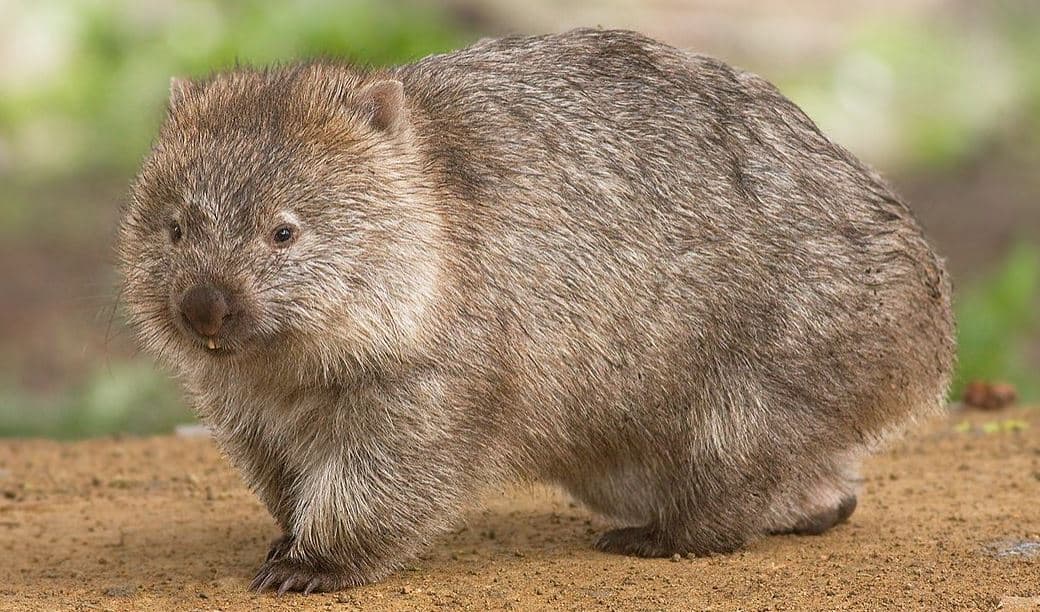
A Wombat is a marsupial that belongs to Family Vombatidae, Order Diprotodontia, and is found in Australia, Tasmania, central Queensland, and other places.
As a marsupial, the wombat also possesses pouches but is backward-facing to keep dirt away while its mother is engaged in the digging process. Its pouch is meant for nourishing and protecting the newborn wombat called Joey. After birth, the newborn Joey from the birth canal crawls towards backward-facing pouches where its further growth and development is carried out for the next 7-10 months.
The newborn wombat called Joey is so tiny as it weighs only about 1 gram and is about 1 inch long.
Tree Kangaroo
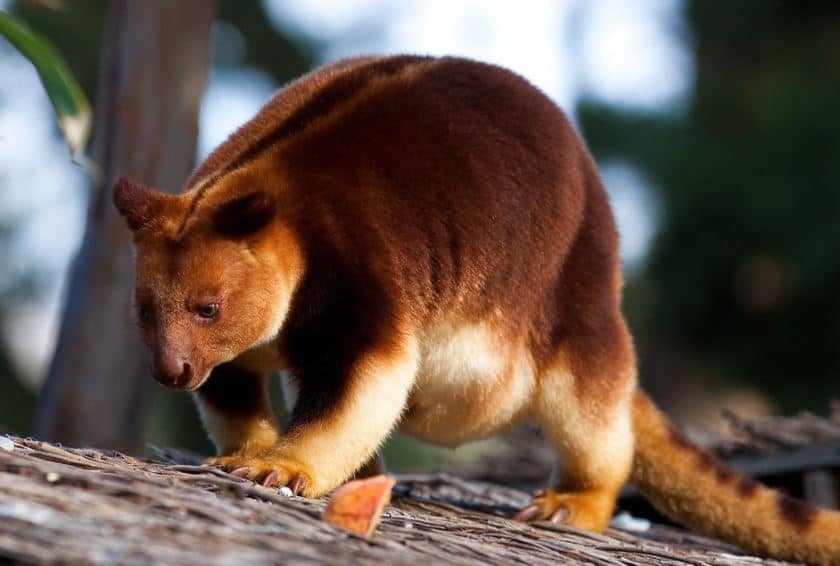
A Tree-kangaroo is a true arboreal macropod that belongs to Genus Dendrolagus, Family Macropodidae, and is found in Papua New Guinea, Indonesia, north of Queensland, and Australia.
The female of Tree-kangaroo reaches sexual maturity faster around 2 years while requiring only 2 months to give rise to young ones that after birth crawls toward pouches where it grows and develops 270 days long.
Really surprising, The joey of a Tree-kangaroo is successfully survived when it is transferred to the pouch of female wallabies for nourishment and care as the original mother of Tree-kangaroo was dead.
Wallaroos
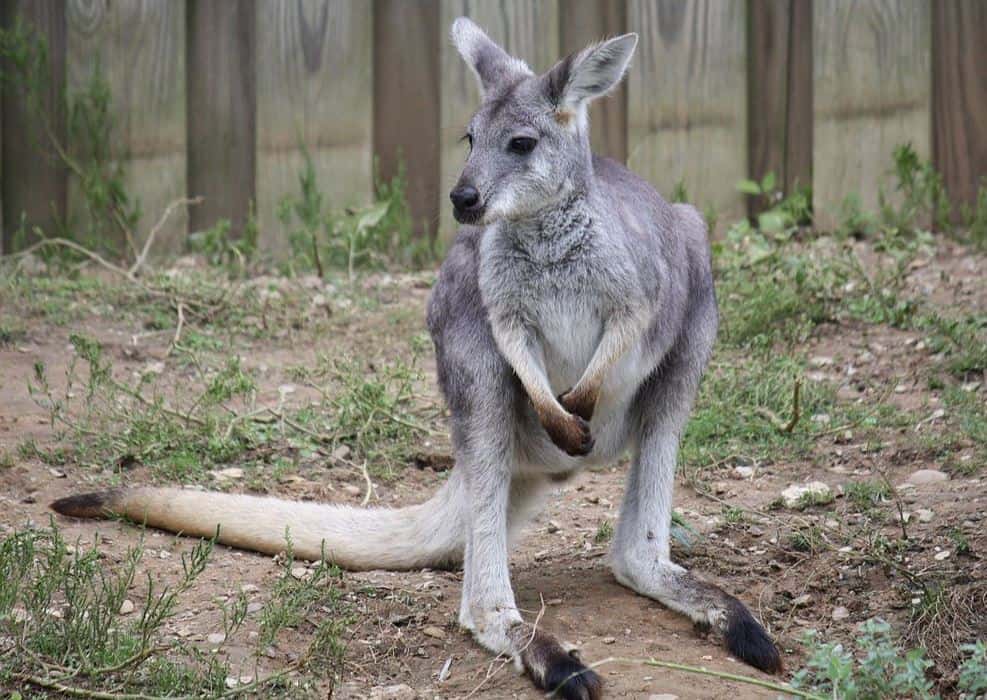
A common wallaroo, also known as the euro, hill wallaroo, and simply wallaroo is a marsupial macropod that belongs to Genus Osphranter, Family Macropodidae, and is found in eastern Australia, Victoria, Queensland, and other places as well.
The females of a wallaroo have pouches and require about 35 days to produce Joey that later crawls into her mother’s pouch for further growth and nourishment. After six to nine months of pouch life, the Joey or baby wallaroo is ready to live on its own. Surprisingly, The parents of Joey, including their father and mother wallaroo, will live together and care for each other until Joey becomes independent, Later, they will become separate.
Surprisingly, Male wallaroos develop faster than female wallaroos. A male wallaroo requires about 18 to 20 months while the female requires 14 to 24 months for complete development.
Sugar glider

A sugar glider is a nocturnal gliding possum that belongs to Genus Petaurus, Family Petauridae, and is found in Australia, Indonesia, and Papua New Guinea.
The female sugar gliders require just 15 to 17 days of the gestation period. After this, the newborn called Joey is born that is so tiny as it weighs only 0.2 grams crawls towards the pouch for nourishment and protection. The pouch has an anterior opening with 2-4 nipples, a scent gland, and a septum that protects the Joey from landing forces.
The interesting thing about sugar gliders, especially the female sugar gliders, is they are able to glide in the air while carrying their baby in their pouches-that’s really impressive.
Tasmanian Devil
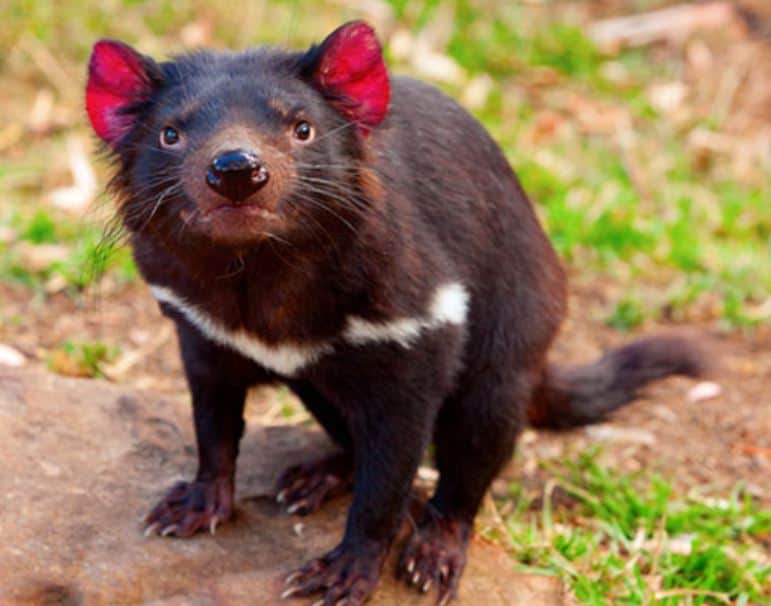
The Tasmanian devil is the largest carnivorous marsupial in the world that belongs to Genus Sarcophilus, Family Dasyuridae, and is found in the island state of Tasmania, New South Wales, Australia.
Of course, As it belongs to marsupials it has a pouch but an unusual fact about its pouch is it faces backward in direction. This backward-opening pouch keeps dirt away from their pouch, similar to those pouches in wombats. The pouch of the female Tasmanian devil has four teats that can support up to four Tasmanian devil babies called Joey.
A Joey of the Tasmanian devil so tiny as it weighs just 0.2 grams at birth that starts to grow faster and becomes independent after nine months.
American Opossums

The Virginia opossum, also known as the North American opossum, is a marsupial that belongs to Genus Didelphis, Family Didelphidae, and is found in the north of Mexico, the United States, and other places.
The newborn Virginia opossum called the Joey of Virginia opossum is so small about the size of a honeybee moves from the birth canal into its mother’s pouch for further growth and safety. Inside the pouch, there are about 13 teats available for feeding milk for around two months.
After the pouch life, the juveniles crawl on the back of the mother to learn survival skills. Later, they will become independent as they start to live and find food on their own.
Common Ringtail Possum

A common ringtail possum is a marsupial that belongs to Genus Pseudocheirus, Family Pseudocheiridae, and is found in Western Australia, eastern Australia,
The young ones of a common ringtail possum called the Joey crawl into pouches for nourishment. After about 100 days, they open their eyes. Its mother starts to feed more solid food rich in proteins and lipids for growth and development when they start to come out of a pouch.
Interestingly, Its lactation usually continues even after they come out of the pouch up to 180–220 days, occasionally up to 145 days. This long relationship enables them to learn life skills from their parents.
Seahorse
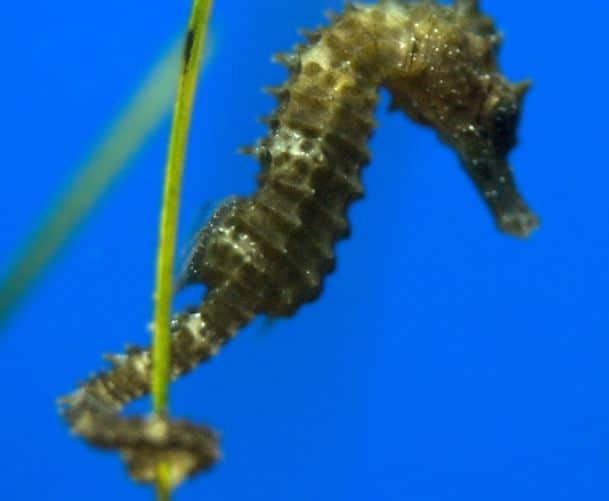
A seahorse, including Dwarf seahorse, Zebra seahorse, Big-belly seahorse, and others, is a small-sized marine animal that belongs to Genus Hippocampus, Family Syngnathidae, and is found in coral reefs, mangroves, seagrass beds, and estuaries.
In contrast to many other animals, The males of seahorse have a pouch called a brood pouch that is present on their abdomen at the ventral surface. The female of the seahorse deposits thousands of eggs into a brood pouch of the male through her ovipositor during this female body becomes slim and the male body turns into bulges. The deposited eggs in the male’s brood pouch start to hatch between 9 to 45 days.
The brood pouch of the male seahorse can house thousands of eggs and delivery of those eggs occurs between 9 to 45 days depending on the species of seahorse it belongs to.
Read more: Animals With big nose
Horned Marsupial Frog

A horned marsupial frog is an arboreal frog species that belongs to Genus Gastrotheca, Family Hemiphractidae, and is found in Colombia, Costa Rica, Ecuador, Panama, and other places.
The largest amphibian eggs are laid by these family frogs that do not even go into the large or tadpole stages. The female of these frogs has specialized skin modified into a pouch called brood pouch that is highly vascular and permeable to gas exchange primarily meant for storing, nourishing, and protecting the developing eggs. This brood pouch is located on the lower back of the female frogs.
This brood pouch releases the tiny froglets without involving them to undergo tadpole stage.
